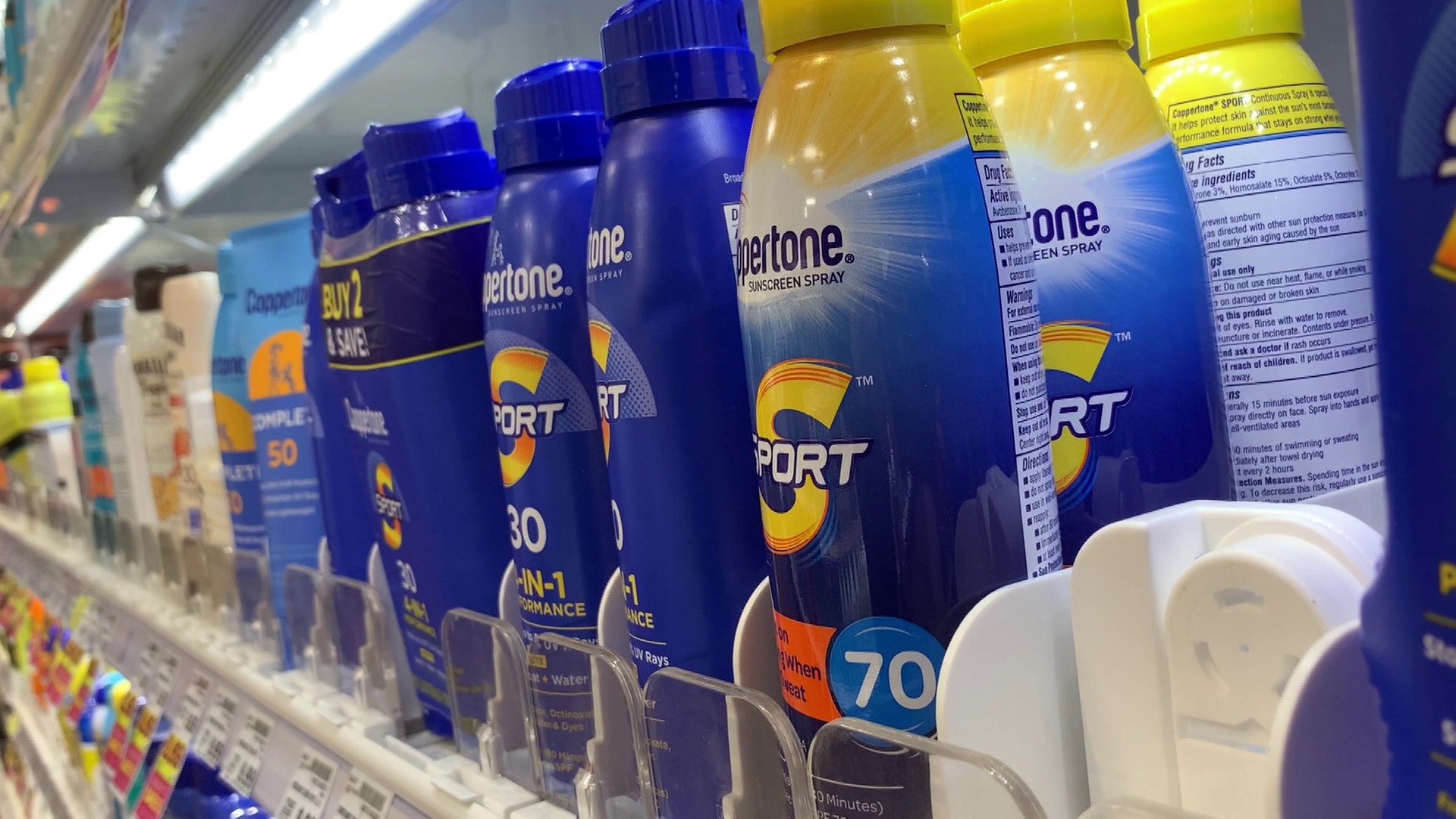INDIANAPOLIS — Sunscreen is not something to save for the beach. That is why companies are putting SPF, or sun protection factor, in makeup and moisturizers.
But picking out a product can be confusing.
Ingredients can smell different, work differently, and even look different.
Anchor Jalea Brooks and Consumer Reporter Allison Gormly took two different trips to find products that blend well on different skin tones, offer SPF 30, and are broad spectrum.
Broad spectrum means they protect against UVA and UVB rays. SPF only addresses UVB rays. To help you remember the difference, think UVA for aging rays and UVB for burns.
We purchased CeraVe Facial Lotion, Tula Skin Care, Neutrogena tinted moisturizer, and Hawaiian Tropic's sheer touch. Then, the products were taken to Indiana University-Purdue University of Indianapolis to test their UV absorption.
Ph.D. student Drew Mueller explained that the machine they used would shoot UV light through the product and detect how much was absorbed by it.
"A high peak is usually a good sign," Mueller said.
Then, Mueller and Dr. John Goodpaster put the samples under a UV light for a few hours to see if the product changed.
"We found that largely they were unchanged. So these products are designed to both absorb UV light but also stand up to the punishment of being irradiated with light," Goodpaster said.
Their results also confirmed that the products protect differently.
SPF with chemicals absorbs the UV rays so your skin does not, while SPF with physical blockers, like minerals, deflect UV rays.
We then took the results to dermatologist Dr. Syril Keena Que to interpret.
"My advice would be that of these four products, you could really choose any of them," Que said.
She added that it often comes down to preference and price point.


Hawaiian Tropic is $10, Neutrogena Tinted Moisturizer is $14, CeraVe is $19, and Tula is $38.
"It's probably more expensive because the formulation is just more lightweight, so it's an easier thing to apply to the skin," Que said.
The $38 product also uses natural ingredients, including pineapple, papaya, and some probiotics.
However, it is important to note that the term "clean" is not regulated.
Some products might not contain chemicals, while others use natural ingredients. It's up to the consumer to know what's best for their skin.

